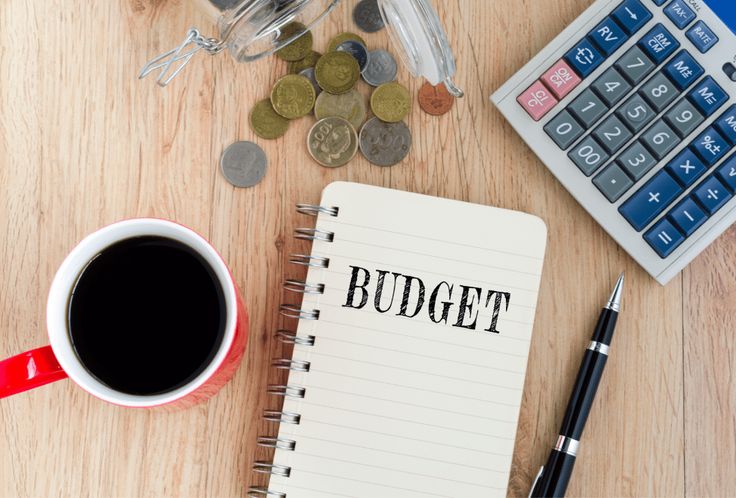How to Create a Budget That Actually Works
 Introduction: The Path to Financial Freedom
Introduction: The Path to Financial Freedom
Creating a budget that actually works isn't just about restricting your spending—it's about gaining control of your financial life and building a path toward your goals. Many people attempt budgeting only to abandon their plans within weeks because they've created unrealistic expectations or overly complicated systems. The truth is that an effective budget should be personalized, flexible, and aligned with your values. According to a survey by Debt.com, nearly 80% of Americans who maintain a budget report feeling more in control of their finances, yet only about 33% of Americans consistently follow a budget. This disconnect highlights how challenging it can be to create and stick to a financial plan that truly works. This comprehensive guide will walk you through the process of creating a budget that's not just theoretical but practically applicable to your unique financial situation.
Understanding the Psychology of Money Management
Before diving into spreadsheets and numbers, it's essential to address the psychological aspects of budgeting. Our relationship with money is deeply emotional and often shaped by childhood experiences, cultural influences, and personal values. According to financial psychologist Dr. Brad Klontz, many budgeting attempts fail because they don't account for these psychological factors. The Consumer Financial Protection Bureau emphasizes that understanding your money mindset is the first step toward creating lasting financial habits. Take time to reflect on your attitudes toward spending and saving. Do you view money as a source of security, freedom, status, or something else entirely? Recognizing these patterns can help you design a budget that works with your psychology rather than against it. Additionally, a study published in the Journal of Consumer Research found that people who view budgeting as a positive tool for achieving their dreams rather than a restrictive limitation are significantly more likely to maintain their financial plans over time.
Gathering Your Financial Data: Creating a Clear Picture
Creating an effective budget begins with a thorough understanding of your current financial situation. This means collecting comprehensive data about your income, expenses, debts, and assets. The Federal Trade Commission recommends gathering at least three months of financial statements to identify patterns in your spending. Start by listing all sources of income, including your primary job, side hustles, investments, and any other cash inflows. Next, catalog all your expenses, from fixed costs like rent and utilities to variable spending on groceries, entertainment, and discretionary purchases. Don't forget to include irregular expenses such as annual insurance premiums, seasonal costs, and occasional splurges. Many people underestimate their actual spending by 15-20%, according to research from the National Foundation for Credit Counseling, so be meticulous in your tracking. Digital tools like Mint, YNAB, or even your bank's built-in expense categorization features can help automate this process and ensure accuracy. The goal at this stage isn't to judge your spending but simply to create an honest and comprehensive picture of where your money is currently going.
Choosing the Right Budgeting Method for Your Lifestyle
There's no one-size-fits-all approach to budgeting, and the most effective system is the one you'll actually use consistently. Several popular methodologies have proven successful for different types of people and financial situations. The 50/30/20 budget, popularized by Senator Elizabeth Warren, suggests allocating 50% of your income to needs, 30% to wants, and 20% to savings and debt repayment. This simplified approach works well for beginners and those who prefer less micromanagement. The zero-based budget, advocated by financial expert Dave Ramsey, requires giving every dollar a specific job until your income minus expenses equals zero. While more time-intensive, this method provides maximum control and awareness. The envelope system involves allocating cash to different spending categories in physical envelopes, making it impossible to overspend in any category. Digital versions of this approach are now available through apps like Goodbudget. For those with irregular income, the anti-budget focuses on automatically saving and investing a predetermined percentage of income first, then allowing flexibility with the remainder. Personal finance expert Ramit Sethi promotes an approach that emphasizes spending freely on things you truly value while cutting ruthlessly on things you don't. Consider your personality, income stability, and financial goals when selecting the method that will work best for you.
Setting Meaningful Financial Goals: Your Budget's North Star
A budget without clear goals is like a road trip without a destination—you might be moving, but you're not getting anywhere specific. Research from the Journal of Financial Planning indicates that people with written financial goals are 42% more likely to achieve them than those without documented objectives. Start by categorizing your goals into short-term (under 1 year), medium-term (1-5 years), and long-term (5+ years) targets. Examples might include building an emergency fund, paying off credit card debt, saving for a down payment on a home, or investing for retirement. The Consumer Financial Protection Bureau recommends using the SMART criteria—making goals Specific, Measurable, Achievable, Relevant, and Time-bound. Instead of "save more money," a SMART goal would be "save $10,000 for a home down payment by December 2026." Vanguard's research demonstrates that connecting financial goals to personal values significantly increases motivation and follow-through. For example, if family security is a core value, framing your emergency fund as "family protection" rather than just "savings" can strengthen your commitment. Remember that goals will evolve over time, so plan to revisit and adjust them at least annually.
Creating Your Budget Framework: Building the Structure
With your financial data collected and goals established, it's time to create the actual budget framework. According to The Balance, the most successful budgets account for both fixed and variable expenses while allowing flexibility for unexpected costs. Begin by listing your fixed monthly expenses—those that remain relatively constant each month, such as rent/mortgage, loan payments, insurance premiums, and subscription services. Next, allocate funds for essential variable expenses like groceries, utilities, and transportation. The Bureau of Labor Statistics provides national averages for household spending categories that can serve as benchmarks, though your personal circumstances may differ significantly. Don't forget to build in allocations for irregular but predictable expenses by dividing annual costs (like car registration or holiday gifts) by 12 and setting aside that amount monthly. Most importantly, incorporate your financial goals as expenses in your budget. If you're aiming to save $6,000 this year, that translates to a $500 "expense" each month directed toward savings. Many experts, including those at Fidelity Investments, recommend the "pay yourself first" principle—treating savings as a non-negotiable expense rather than whatever is left over at month's end. Finally, allocate funds for discretionary spending on entertainment, dining out, and other wants. While it's tempting to eliminate these categories entirely when budgeting, research from Northwestern Mutual suggests that overly restrictive budgets typically fail within months. The key is moderation, not deprivation.
Implementing Your Budget: Practical Systems for Success
Even the most perfectly designed budget is worthless if not implemented effectively. Bankrate reports that 60% of Americans who create budgets struggle with consistent tracking and implementation. To avoid this pitfall, establish a practical system for monitoring your finances. Digital tools offer convenience and automation, with options ranging from comprehensive services like Personal Capital and Tiller Money to simpler apps like PocketGuard or Simplifi by Quicken. Alternatively, spreadsheet templates from Microsoft Excel or Google Sheets provide customizable options for those who prefer more control. For the tech-averse, paper-based systems like budget planners from The Budget Mom or the Kakeibo method offer tangible alternatives. Whatever system you choose, schedule regular money dates with yourself or your partner to review your budget. According to Financial Advisor magazine, weekly check-ins of 15-20 minutes are more effective than monthly reviews. Consider using automation to simplify implementation—set up direct deposits to savings accounts, automatic bill payments, and account notifications for unusual spending. Many banks, including Chase and Bank of America, offer built-in budgeting tools and automatic transfers to help streamline this process.
Adjusting for Life's Realities: Making Your Budget Flexible
A common reason budgets fail is their inability to adapt to life's inevitable changes and surprises. Financial experts at The Motley Fool emphasize that flexibility is crucial for long-term budgeting success. Build contingency planning into your budget by including a miscellaneous category (typically 5-10% of your total budget) for truly unexpected expenses. For larger irregular expenses, create sinking funds—dedicated savings for specific future costs like car repairs, home maintenance, or medical expenses. According to Credit Karma, sinking funds can reduce financial stress by spreading large expenses over time. Remember that economic conditions and personal circumstances change. Income might increase through raises or decrease through job loss; fixed expenses can rise due to inflation; priorities shift as family situations evolve. Fidelity research indicates that most successful budgeters perform a comprehensive budget overhaul at least once annually, with minor adjustments made quarterly. Treat your budget as a living document rather than a rigid structure, and don't be discouraged by the need to make changes—adaptation is a sign of financial maturity, not failure.
Behavioral Strategies for Sticking to Your Budget
Creating a budget is one challenge; sticking to it consistently is another entirely. Behavioral economics research has identified several strategies that increase adherence to financial plans. First, leverage the power of automation whenever possible. According to Charles Schwab's Modern Wealth Survey, people who automate their finances report 30% higher satisfaction with their financial situation. Second, use visual reminders of your financial goals—studies from the Journal of Marketing Research show that visual cues significantly improve financial discipline. This could be a photo of your dream home as your phone wallpaper or a progress bar showing debt reduction on your refrigerator. Third, implement the 24-hour rule for non-essential purchases over a certain amount. Psychology Today reports that this cooling-off period dramatically reduces impulsive spending. Fourth, find an accountability partner or join a community like r/personalfinance or Bogleheads to share challenges and celebrate wins. Finally, build rewards into your system—Northwestern Mutual financial advisors recommend celebrating milestone achievements with small, budget-friendly rewards to maintain motivation on your financial journey.
Advanced Budgeting Techniques for Financial Optimization
Once you've mastered the basics of budgeting, you might explore more sophisticated techniques to optimize your financial life. The Wall Street Journal's personal finance section highlights several advanced approaches. Value-based budgeting focuses on aligning spending with your core values, eliminating expenses that don't contribute to your priorities regardless of their size. Financial experts at Betterment suggest performing an annual value audit, rating each spending category by how much joy or value it brings. Tax-efficient budgeting incorporates tax planning into your financial decisions, maximizing contributions to tax-advantaged accounts like 401(k)s, HSAs, and 529 plans. According to H&R Block, strategic tax planning can save the average household thousands annually. Cash flow optimization focuses on timing income and expenses to maximize interest earned and minimize interest paid. Financial Planning Association research shows that coordinating bill payment dates with income receipt can provide the same benefit as a 0.5% raise for many households. Finally, zero-based life budgeting applies budgeting principles not just to money but to time and energy, ensuring all your resources are allocated intentionally toward your highest priorities.
Conclusion: The Evolving Journey of Financial Mastery
Creating a budget that actually works is not a one-time event but an evolving practice that grows with you. As Financial writer Morgan Housel points out in his book "The Psychology of Money," financial success is less about complex strategies and more about sustainable behaviors maintained over time. Your budget should be seen as a tool for freedom rather than restriction—a means of directing your financial resources toward what truly matters to you while eliminating waste and worry. According to the Financial Wellness Survey by PwC, individuals with functioning budgets report 28% lower financial stress and 23% higher overall life satisfaction. Remember that perfection is not the goal; progress is. Some months will go exactly according to plan, while others will bring unexpected challenges. What matters is returning to your system, learning from experience, and continuously refining your approach. By implementing the strategies outlined in this guide, you'll be well on your way to creating not just a budget that works on paper, but a comprehensive financial system that supports your goals and values throughout life's journey.

